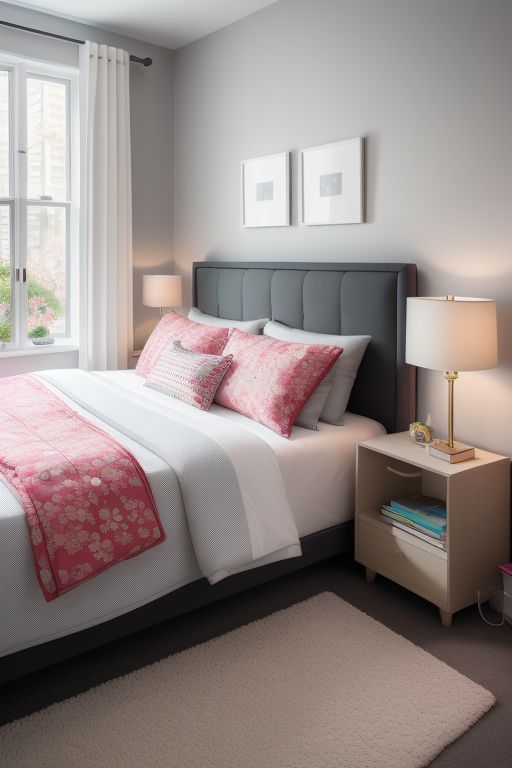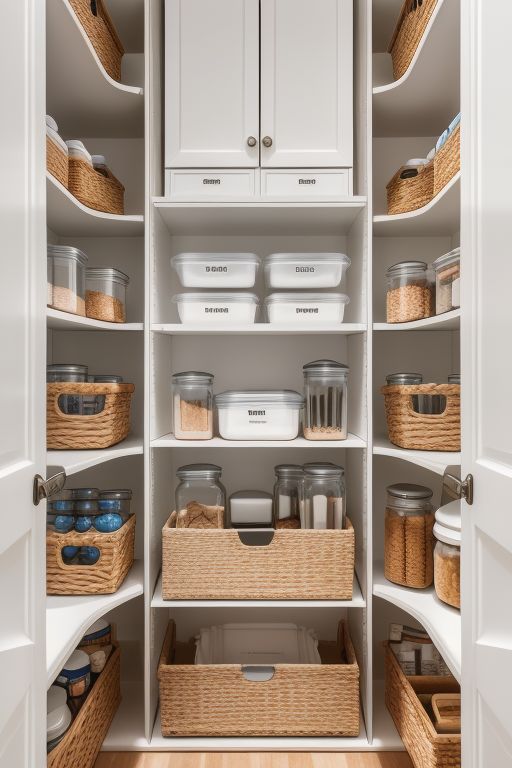You look at a space and can’t even bring yourself to start decluttering it. Declutter Paralysis has kicked in and you don’t know what to do.
You know you need to declutter this space. It’s stressing you out. But you just can’t. You don’t know where or even how to start. Even if you did know, it’s just so overwhelming that you can’t bring yourself to start on it.
I’ve been there before. It’s tough to bring yourself to get past decluttering paralysis, but once you do, things start to get easier. But first you’ve got to get over that hurdle and that’s where I come in.
What is Declutter Paralysis?
Before we get started in trying to overcome Declutter Paralysis, we have to understand what it is. Declutter Paralysis is when you get so overwhelmed by decluttering that you can’t bring yourself to start decluttering.
This can often happen if you’re already stressed out and you’ve got a space that is very cluttered and disorganized. It can also happen if the space is very large or the task is monumental.
My goal is to provide you some easy steps to overcoming declutter paralysis and help you achieve your goals of a decluttered space.
Step 1: Redefine Your Decluttered Vision
Declutter Paralysis is largely a mental state. Half of getting past declutter paralysis is removing that mental block that is preventing you from starting.
I’ve had to clean up some gnarly spaces. The mental thought going through my head that was a little voice saying “I don’t want to do this. I know I have to do this, but this is going to suck. So nope, I’m not going to do this.” This can be an extremely difficult voice to ignore.
One thing I chose to do is redefine what my vision of the decluttered space looked like. So many people get caught on “picture perfection”. Don’t guilt yourself into thinking that you have to have this picture perfect home.
Houses are to be lived in and you are just setting yourself up for failure to try and make it picture perfect all the time. So eliminate that thought right away. You can make it better, but striving for perfect will just set you back where you started.
Step 2: Make it More Manageable
I hear you groaning right now. “Yeah, if it was more manageable, I’d do it already.” Part of declutter paralysis is that most people don’t know how to make the task more manageable. It’s more difficult than it sounds.
Take a look at the space that needs to be decluttered. Start by remembering, you don’t have to do this all at once. Even if you’ve only got a weekend or a day to do it, you don’t have to do it all at once.
Break it Down into Sections
If it’s a big area you are trying to declutter, like an entire room, break it down into sections. It doesn’t matter how many sections you break it down into, just break it down into something that is manageable to you.
I remember decluttering what is now the kid’s playroom. I needed to have it decluttered and organized by the end of the day because we had guests coming over that night and I’d been working a lot. I’d taken the day off to declutter it.
Declutter paralysis had set in hard. I did not want to tackle that room and it had just gotten worse month after month.
It was a mess. Boxes everywhere from moving. It was the catch-all storage area for everything for years. I ended up breaking it down into 12 different areas to make it more manageable because it was so overwhelming.
Those areas ranged from a single shelf on the book case which was just loaded with stuff to a 10 square foot corner piled high with boxes.
By breaking it down it changed the mindset from “I have to do all this work! It’s never going to get done, I don’t even want to start.” To “I can get this shelf done in the next 30 minutes, it’s small and manageable.” or “I can get this box done in the next 15 minutes and then take a 5-10 minute break.” Once you’ve gotten into this new mindset, you’ve made huge progress in overcoming your declutter paralysis.
When I was decluttering my old home, There were seriously days when all I could bring myself to accomplish was one 2 foot long shelf on a bookcase.
But if that was all I could bring myself to accomplish that day without getting overwhelmed, so be it. I made progress! As a bonus, once it was decluttered, it remained decluttered.
Step 3: The Multi-Pass Method
Once it’s broken down into sections, I go through each section on different passes. These different passes are just different levels of effort required to declutter.
First Pass: Low Effort
The first pass is doing the lowest effort work first. The things you don’t have to think about. Start by just eliminating anything that is just garbage. Garbage has no use, no sentimental value, it’s easy to get rid of.
So just bring your trash and recycle bin over and anything that fits into that category, just eliminate right off the top. There! It’s gone! You’ve already made progress! It always amazes me how many items when I am decluttering are just garbage. You may not initially think there is any garbage in the spot you are decluttering, but there probably is.
Second Pass: Items that Make you Feel Bad
For the second pass, I get rid of anything that makes me feel bad or upset. If this reminds you of the KonMari method where she asks ‘Does this Spark Joy?’ It’s because it’s a similar concept.
These items I might get rid of are dead plants because I have zero ability to keep plants alive as I always forget to water them, unfinished projects that you are realistically never going to finish, clothes that you dislike, or even expensive items that make you feel guilty for never using them.
Third Pass: Items You Don’t Care About
On the third pass, these are things that you don’t really care about. They may still be useful, but you really don’t need them anymore. For example, this might be books and movies that you are never going to read or watch again, items that you’ve replaced with something nicer like old phones, worn out food storage containers, or small appliances. All of these are prime candidates for disposal.
Fourth Pass: Send Things Home
On the fourth pass, I start placing things in their proper home. For example, I decluttered a window sill the other day and I realized I had a tape measure there that hadn’t gotten back into its home after I hung up a coat rack because kids cause chaos and I forgot I had left it there.
This was clearly something that I needed and used, but it was causing clutter by not going to its proper place. Just putting things in their proper home can generally clean up a lot of space.
By the time you’ve gone through all four passes, you should have decluttered the whole space. If you are still cluttered in that space, then go through it again.
Tip and Tricks to Deal with Declutter Paralysis
If you’re still dealing with declutter paralysis, there are lots of ways to deal with it. Here are a few of my go-to tricks that help me get through the process easier:
The Container as Limits Method
One of the big mental blocks I dealt with that caused declutter paralysis was that I have a lot more of something than I actually need but the items are still useful. In this case, it’s helpful to use the container method. Make the container the enemy and not your mind.
A quick example is pens. I have a lot of pens. Do I need 100 pens? Probably not. So I put them in a pen holder and it only held 30 pens. So I took out the 70 pens I didn’t like, that never wrote correctly, were out of ink, etc and left only the 30 I liked.
It was still a lot of pens but I didn’t feel bad about getting rid of those 70 pens anymore because the space only allows for 30.
Take Pictures
If you are still having problems overcoming declutter paralysis, take a picture of the space. Then take 5 minutes and declutter whatever you can in that time. Once the 5 minutes is up, leave the space for the day. Clear it from your mind. Then go back to it the next day and declutter for another 5 minutes. Repeat this until your space is decluttered.
There might be days you only declutter 1-2 items, but at the end you will have a decluttered space. If you are feeling overwhelmed on any day, go back and look at that before photo. Compare it to the progress you’ve made.
Choose Visible Spots to Declutter
If your whole house is cluttered, then choose the spot that is most visible to you. Sure, your closet in the hall might be a mess, but if you spend 4 hours cleaning it out and then you never look at it, you aren’t ever going to feel like you’ve accomplished anything.
But if you declutter that space that you see every day as you walk in the door, you’ll see your accomplishments and this will help to overcome the declutter paralysis.
Items You Feel Guilty Getting Rid Of
Are you feeling guilty about potentially getting rid of stuff that was gifted to you? Maybe an item was somewhat valuable or it has sentimental value to someone who gave it to you. So you feel bad getting rid of it.
This is your permission to get rid of it. Acknowledge the guilt associated with getting rid of items and understand that you have the right to let go of things that no longer serve you, even if they were gifted or have sentimental value.
Give yourself permission to release the burden of these items. Remember, once they are in your possession, you have the power to decide what stays and what goes. Embrace the freedom that comes with decluttering.
In conclusion, overcoming declutter paralysis is not only achievable but also empowering. By simply taking the first step, whether it’s tackling one small area or setting a timer for just a few minutes, you can break the cycle of feeling overwhelmed. This initial action serves as a catalyst for further progress, helping you regain control over your environment. Remember, the journey to a more organized and peaceful space begins with that first decisive move. Embrace the process, and you will find that clarity and calm are within your reach.




